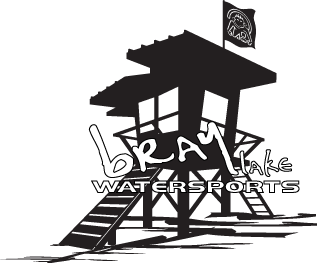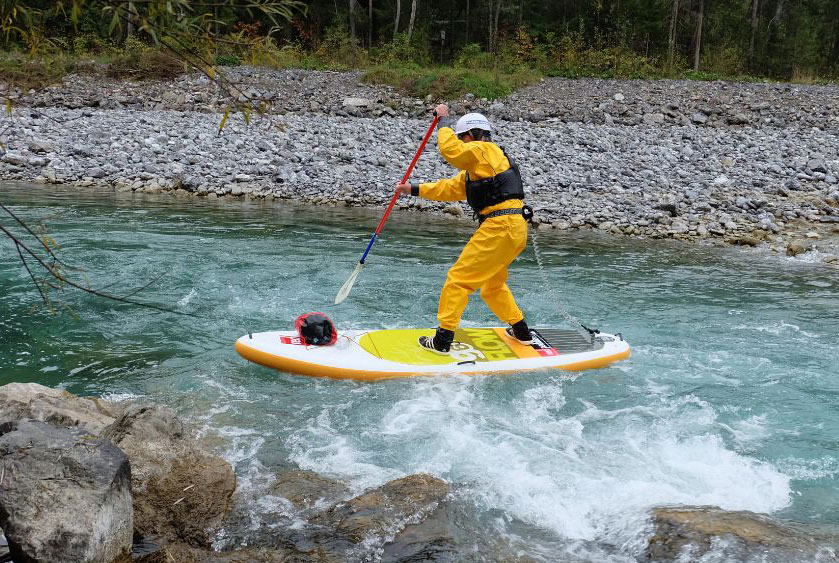
Here on SUPboarder we are seeing more and more paddlers taking to rivers around the world to try their hand at White Water (WW) paddling. Many of the videos we feature show paddlers who are already experienced in a WW environment, be that from kayaking or whitewater rafting. Their videos then either scare or inspire the rest of us to consider following their example!
WW paddleboarding is not for the faint hearted or the inexperienced paddleboarder. Even what looks like a relatively slow moving piece of water can have hidden dangers and severe consequences if not understood and taken seriously.
In order to get an idea of what a novice WW paddler should think about before getting on the river SUPboarder met up with Team Pyranha and South Coast Canoes white water kayaker and SUPer, Amy Elworthy. Here is what Amy had to say:
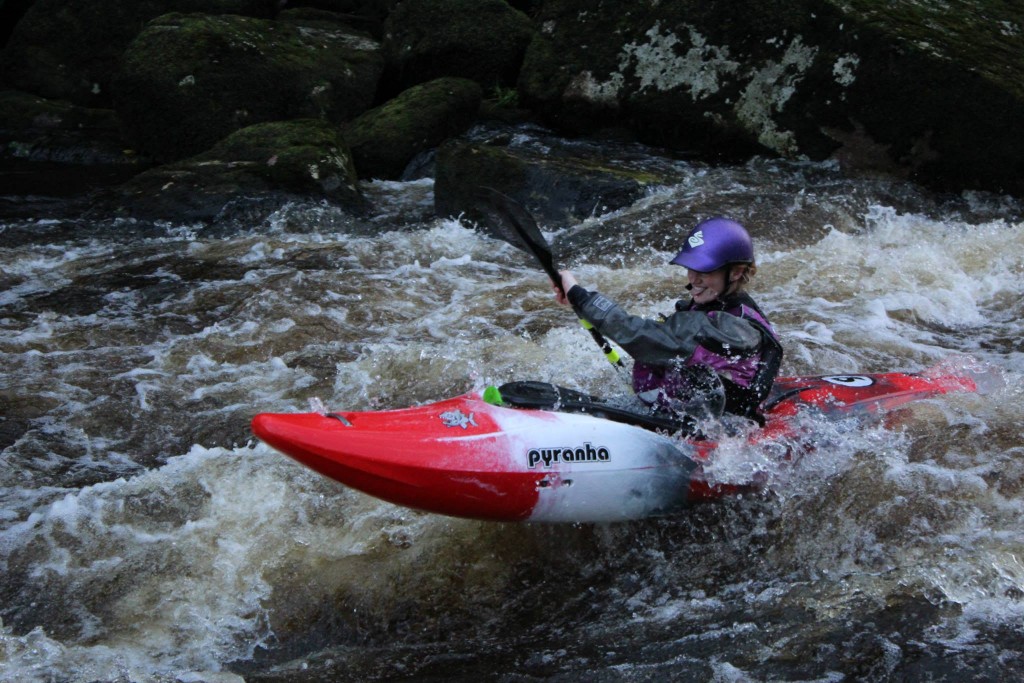
If you’re new to white water, I would recommend that you attend a White Water Safety and Rescue training Course. This is very important for focusing on rescuing people if they get in to trouble on the river. It will show you how to get people out of entrapments, re-circulating stoppers, and will give you general information on setting up safety before running rapids.
Always wear a helmet and always wear a buoyancy aid.
In addition to those there are some other items of kit I always have with me:
- A throw line. This can be used to set up safety on rapids in case someone swims. It can also be used (with the correct training) to rescue people from entrapment on the rivers.
- A knife and a whistle in an easily accessible location on my buoyancy aid. If in the case that you do get tied up by a throw line, or are unable to grab your quick release buckle, then the knife is there to cut yourself free. I would only use the whistle in an emergency to grab someone’s attention.
- A first aid kit. In a kayak there is a fair bit of space for lots of extra kit and it’s obviously not that easy on a SUP, but I would highly recommend one to be carried attached to your board. I would never use a rucksack for extra kit, as this would be a high risk if you were to swim on the whitewater.
- A set of splits (spare split paddles) for the times when someone in the group loses/breaks a paddle. Obviously on a SUP it’s not that easy to carry spare gear like this but it is definitely something you’d be very happy to have if you were stuck without one!
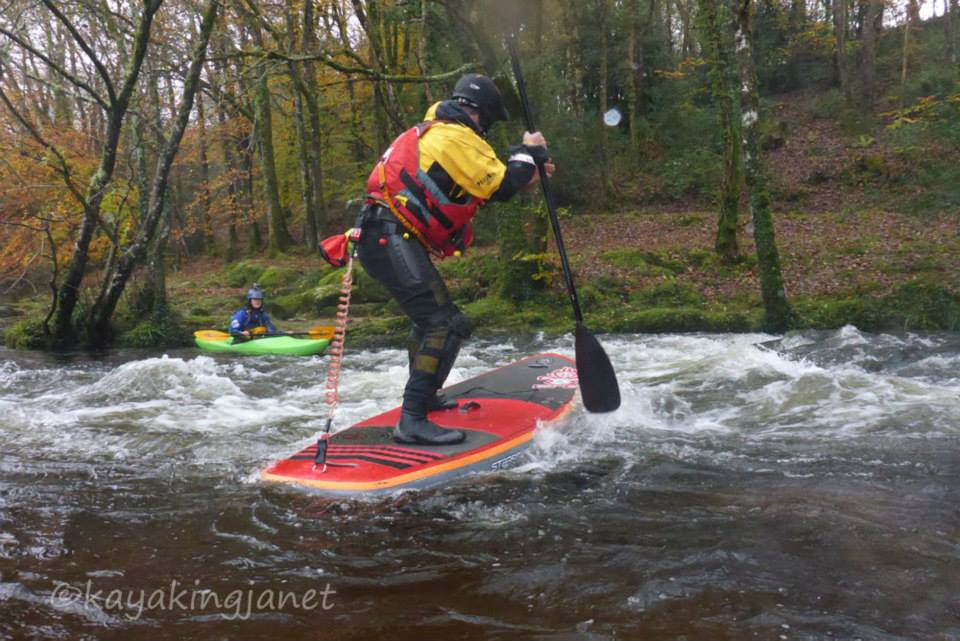
Photo of Martin Tillman from Weston Paddleboard Academy with all the safety in place on the River Dart – Photo by kayakingjanet
If you’re to be attached to something then ensure it has an easily accessible quick release on it.
One thing that paddlers new to the river might not consider is a good pair of shoes! A lot of time is spent running up and down the riverbank looking at rapids so make sure you have some shoes with good grip and ankle support.
If you decide you do want to get out on the rivers, it is best to have at least three of you for the trip. This way you can run a river safely, ensuring you have enough people to put safety on when running rapids, and knowing that if you do get in to difficulty you have enough people to help out.
White water paddling has opened up so much of the world to me that I didn’t realise was there to be accessed by river. So far I have been lucky enough to paddle in France, Portugal, Italy, Norway, India, and many places around the UK. Since I started paddling just over 6 years ago I have had ups and severe downs, trips don’t always go plan, accidents have happened. These experiences have reinforced how critical it is to have the correct knowledge and safety gear on the rivers. Hopefully these few tips from me can point you in the right direction, and most importantly, ensure that you can enjoy the rivers as much as I continue to do.
So wrap up warm, take some safety gear, listen to local knowledge, paddle safe and go and enjoy the beautiful rivers that we have around us. Words by Amy Elworthy.
So before you and your mates decide to launch yourselves down afew rapids one Sunday on a SUP make sure you consider the above and know your limits! Don’t underestimate the dangers of flowing water. Unlike a surf wave, it never stops! But with all the right equipment and knowledge it can be great fun.
If you are tempted to try some WW near you checkout your local WW SUP or kayak clubs for advice and see if you can join them for an introduction to WW paddling.
About the author
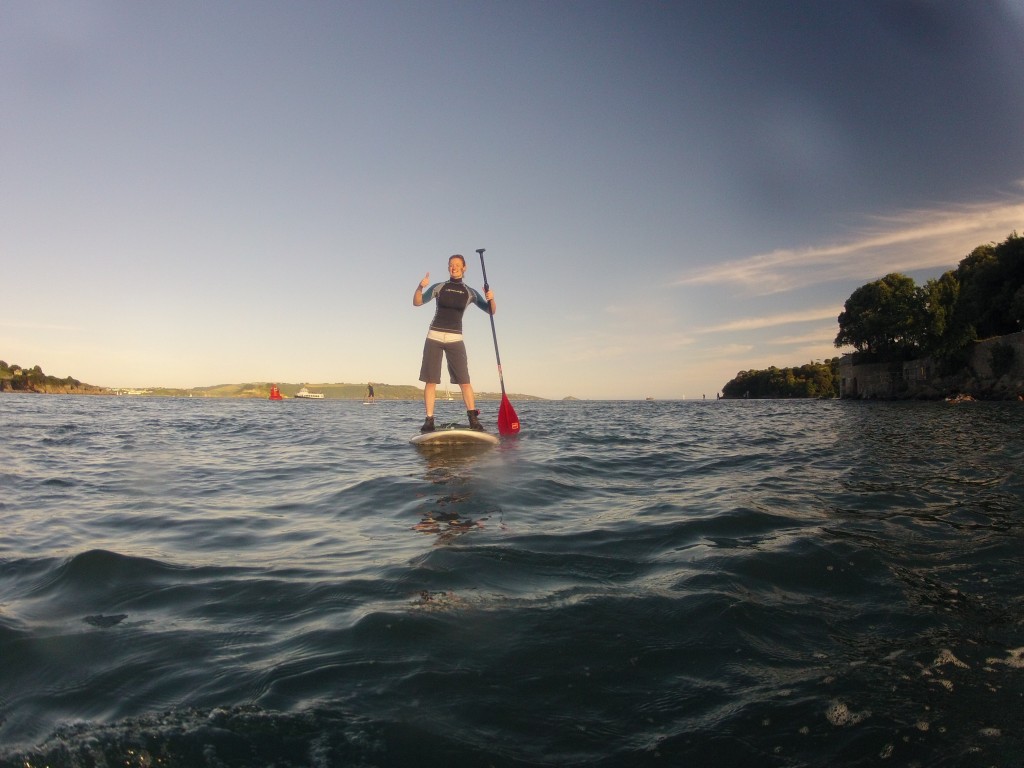
Amy has been WW kayaking for approx six years. She leads groups on Grade 4 and can be found pushing her own limits on Grade 5 white water in the UK and Europe. And she can be found standing on a paddleboard when the rivers aren’t flowing in the summer months. More of Amy’s adventures can be found on her blog: kayakingamy.wordpress.com








